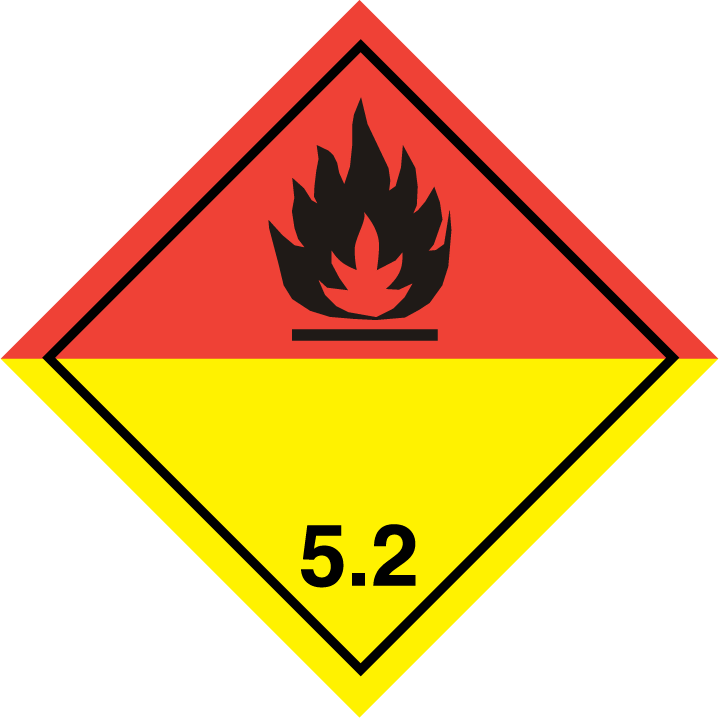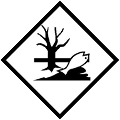SAFETY DATA SHEET
Benzoyl Peroxide Paste
1. IDENTIFICATION
Product Identifiers
Product Name:
2,4-Dichlorobenzyl Peroxide Paste
Other Names:
Ben Perox Paste
Product Number(s):
C037 - COMPONENT
CAS Number:
-
Recommended use of the chemical and restriction on use
Laboratory use
Company Details
ProSciTech Pty Ltd
11 Carlton Street
KIRWAN QLD 4817
Australia(07) 4773 9444www.proscitech.com
11 Carlton Street
KIRWAN QLD 4817
Australia(07) 4773 9444www.proscitech.com
Emergency Contact Details
ProSciTech Pty Ltd
11 Carlton Street
KIRWAN QLD 4817
Australia(07) 4773 9444www.proscitech.com
11 Carlton Street
KIRWAN QLD 4817
Australia(07) 4773 9444www.proscitech.com
2. HAZARDS IDENTIFICATION
Classification of the substance or mixture
H242 Organic peroxides (Type D)
H360 May damage fertility or the unborn child
H319 Causes serious eye irritation
H317 May cause an allergic skin reaction
H360 May damage fertility or the unborn child
H319 Causes serious eye irritation
H317 May cause an allergic skin reaction
Label Elements



Signal Words
Danger
Hazard Statement(s)
H242 Heating may cause a fire H317 May cause an allergic skin reactionH319 Causes serious eye irritationH360 May damage fertility or the unborn childH410 Very toxic to aquatic life with long lasting effects.
Precautionary Statement(s)
P201 Obtain special instructions before use P210 Keep away from heat/ sparks/ open flames/ hot surfaces. No smoking. P220 Keep/Store away from clothing/ combustible materials. P234 Keep only in original container. P261 Avoid breathing dust/ fume/ gas/ mist/ vapours/ spray. P273 Avoid release to the environment. P280 Wear protective gloves/ protective clothing/ eye protection/ face protection. Response :P308 + P313 IF exposed or concerned: Get medical advice/ attention. P391 Collect spillage. Storage :P403 + P235 Store in a well-ventilated place. Keep cool.
Primary route(s) of entry
Human Health
Inhalation:
Remove victim to fresh air and keep at rest in a position comfortable for breathing.
Ingestion:
After swallowing: immediately make victim drink water (two glasses at most). Consult a physician
Eyes:
After eye contact: rinse out with plenty of water. Call in ophthalmologist. Remove contact lenses.
Skin:
In case of skin contact: Take off immediately all contaminated clothing. Rinse skin with water/ shower. Consult a physician.
Environment
Dispose of contents/container in accordance with local/regional/national/international regulations.
3. COMPOSITION/INFORMATION ON INGREDIENTS
Name
CAS No.
Content (w/w)
Classification
dibenzoyl peroxide
94-36-0
>= 50 - < 70 %
Org. Perox. B; 2A; Skin Sens. 1; Aquatic Acute 1; Aquatic Chronic 1; H241, H319, H317, H400, H410 M-Factor - Aquatic Acute: 10 - Aquatic Chronic: 10
dibutyl phthalate
84-74-2
2.5-10%
Skin Sens. 1; Repr. 1B; H317, H360
-
-
-
-
4. FIRST AID MEASURES
Ingestion
Do not induce vomiting; immediately make victim drink water (two glasses at most) call for medical help immediately.
Inhalation
Supply fresh air and to be sure call for a doctor.
In case of unconsciousness place patient stably in side position for transportation.
In case of unconsciousness place patient stably in side position for transportation.
Skin Contact
Take off immediately all contaminated clothing. Rinse skin with water/ shower.
Eye Contact
Rinse opened eye for several minutes under running water. If symptoms persist, Call in ophthalmologist
Other Information
Immediately remove any clothing soiled by the product. In case of irregular breathing or respiratory arrest provide artificial respiration.
5. FIREFIGHTING MEASURES
Suitable extinguishing equipment
CO₂, powder or water spray. Fight larger fires with water spray or alcohol resistant foam.
HAZCHEM
Not available.
Special protective equipment and precautions for fire fighters
6. ACCIDENTAL RELEASE MEASURES
Personal precautions, protective equipment and emergency procedures
Advice for non-emergency personnel: Avoid inhalation of dusts. Avoid substance contact. Ensure adequate ventilation. Evacuate the danger area, observe emergency procedures, consult an expert.
Environmental precautions
Do not let product enter drains
Methods and materials for containment and clean up
Cover drains. Collect, bind, and pump off spills. Observe possible material restrictions. Take up carefully. Dispose of properly. Clean up affected area. Avoid generation of dusts.Ensure adequate ventilation.
7. HANDLING AND STORAGE
Precautions for safe handling
Ensure good ventilation/exhaustion at the workplace. Work under hood. Do not inhale substance/mixture. Prevent formation of aerosols. Keep away from open flames, hot surfaces and sources of ignition. Immediately change contaminated clothing. Apply preventive skin protection. Wash hands and face after working with substance.
Conditions for safe storage
Store in a well-ventilated place.
Protect from sunlight
8. EXPOSURE CONTROLS/PERSONAL PROTECTION
Exposure Standards
Engineering controls
Protect from heat. Immediately change contaminated clothing. Apply preventive skin protection. Wash hands and face after working with substance.
Keep respiratory protective device available. DO NOT let product enter drains.
Keep respiratory protective device available. DO NOT let product enter drains.
Personal protective equipment
Eye and face protection
Use equipment for eye protection tested and approved under appropriate government standards such as NIOSH (US) or EN 166(EU). Safety glasses
Skin protection
Protective gloves
The glove material has to be impermeable and resistant to the product/ the substance/ the preparation.
Due to missing tests no recommendation to the glove material can be given for the product/ the preparation/ the chemical mixture.
Selection of the glove material on consideration of the penetration times, rates of diffusion and the degradation ·
Material of gloves
The selection of the suitable gloves does not only depend on the material, but also on further marks of quality and varies from manufacturer to manufacturer. As the product is a preparation of several substances, the resistance of the glove material can not be calculated in advance and has therefore to be checked prior to the application.
Penetration time of glove material
The exact break through time has to be found out by the manufacturer of the protective gloves and has to be observed.
The glove material has to be impermeable and resistant to the product/ the substance/ the preparation.
Due to missing tests no recommendation to the glove material can be given for the product/ the preparation/ the chemical mixture.
Selection of the glove material on consideration of the penetration times, rates of diffusion and the degradation ·
Material of gloves
The selection of the suitable gloves does not only depend on the material, but also on further marks of quality and varies from manufacturer to manufacturer. As the product is a preparation of several substances, the resistance of the glove material can not be calculated in advance and has therefore to be checked prior to the application.
Penetration time of glove material
The exact break through time has to be found out by the manufacturer of the protective gloves and has to be observed.
Body protection
Keep away from foodstuffs, beverages and feed.
Immediately remove all soiled and contaminated clothing
Wash hands before breaks and at the end of work.
Store protective clothing separately.
Avoid contact with the eyes.
Avoid contact with the eyes and skin.
Immediately remove all soiled and contaminated clothing
Wash hands before breaks and at the end of work.
Store protective clothing separately.
Avoid contact with the eyes.
Avoid contact with the eyes and skin.
Respiratory protection
In case of brief exposure or low pollution use respiratory filter device. In case of intensive or longer exposure use self-contained respiratory protective device.
9. PHYSICAL AND CHEMICAL PROPERTIES
General information
Appearance
White pasty
Odour
Mild
pH
Not determined
Vapour Pressure
at 20 °C: 23 hPa
Density
1.2025 g/cm³
Boiling Point
100 °C
Melting Point
Undetermined.
Solubility
Not miscible or difficult to mix with water.
Specific Gravity of Density
Not determined
Flash Point
Not applicable.
Flammable (Explosive) Limits
Lower: 0.1 Vol %
Upper: 2.0 Vol %
Upper: 2.0 Vol %
Ignition Temperature
390 °C
Formula
Not available
10. STABILITY AND REACTIVITY
Reactivity
No further relevant information available
Chemical stability
No decomposition if used according to specifications
Possibility of hazardous reactions
No dangerous reactions known.
Conditions to avoid
No further relevant information available
Incompatible materials
No further relevant information available
11. TOXICOLOGICAL INFORMATION
Acute effects
84-74-2 dibutyl phthalate
LD/LC50 values relevant for classification:
Oral LD50 8000 mg/kg (rat)
Dermal LD50 20,000 mg/kg (rabbit)
LD/LC50 values relevant for classification:
Oral LD50 8000 mg/kg (rat)
Dermal LD50 20,000 mg/kg (rabbit)
Eye contact
Irritating effect
Skin contact
No irritant effect
Ingestion
No further relevant information available
Inhalation
Sensitisation possible through skin contact
Toxicity and irritation
No further relevant information available
12. ECOLOGICAL INFORMATION
Ecotoxicity
Water hazard class 3 (Self-assessment): extremely hazardous for water Do not allow product to reach ground water, water course or sewage system, even in small quantities. Danger to drinking water if even extremely small quantities leak into the ground. Also poisonous for fish and plankton in water bodies. Toxic for aquatic organisms
Persistence and degradability
No further relevant information available.
Bioaccumulative potential
No further relevant information available.
Other adverse effects
Not known to be hazardous to water.
13. DISPOSAL CONSIDERATIONS
General information
Must not be disposed together with household garbage. Do not allow product to reach sewage system.·
Uncleaned packaging: ·
Recommendation: Disposal must be made according to official regulations.
Uncleaned packaging: ·
Recommendation: Disposal must be made according to official regulations.
14. TRANSPORT INFORMATION
ADG label required



HAZCHEM
Not available.
UN Number
UN3106
Proper shipping name
ORGANIC PEROXIDE TYPE D, SOLID
Transport hazard class
5.2 + 1
Packing group
III
Environmental hazard
No
Marine pollutant: Yes (DOT)
Marine pollutant: Yes (DOT)
Special precautions for users
Warning: Organic peroxides
Additional information
Limited quantities (LQ) 500g
Excepted quantities (EQ) Code: E0 Not permitted as Excepted Quantity
Excepted quantities (EQ) Code: E0 Not permitted as Excepted Quantity
15. REGULATORY INFORMATION
Poisons Schedule Number
S2, S4, S5
Other Information
No further relevant information available
16. OTHER INFORMATION
SDS preparation date
25 July 2024
Comments
This information is based on our present knowledge. However, this shall not constitute a guarantee for any specific product features and shall not establish a legally valid contractual relationship.
This Safety Data Sheet (SDS) has been prepared in compliance with the Preparation of Safety Data Sheets for Hazardous Chemicals Code of Practice February 2016. It is the user's responsibility to determine the suitability of this information for adoption of necessary safety precautions. The information published in this SDS has been compiled from the publications listed in Section 16: to the best of our ability and knowledge these publications are considered accurate. We reserve the right to revise Safety Data Sheets as new information becomes available. Copies may be made for non-profit use.